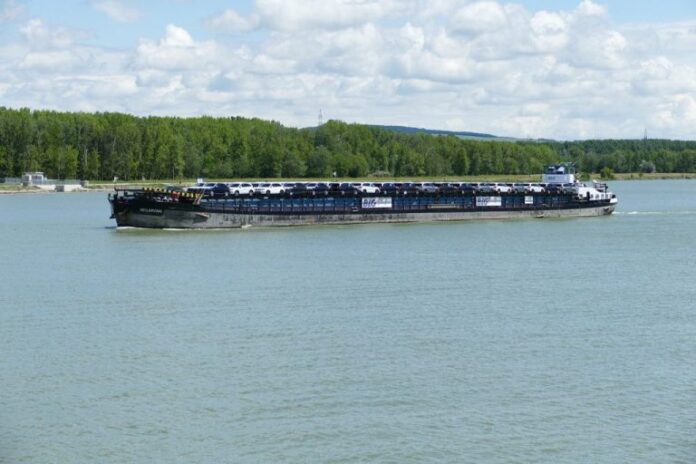The flow of the Danube upon entering Romania in the Bazias section is expected to reach 6,400 cubic metres/s on Tuesday, and gradually increase in the following days, to a record 8,000 cubic metres / on September 30, way above the multiannual average of September, of 3,800 cubic metres/s, the National Administration of Romanian Watercourses (ANAR) reported on Tuesday.
Downstream of the Iron Gates, the flow will generally be increasing.
According to hydrologists from the seven water basin administrations of ANAR, ANAR’s response crews have filled thousands of sandbags, some of which have already been brought close to the Romanian sector of the Danube, as well as other response equipment. Near the town of Bechet, Apele Romane Jiu has dispatched to the Danube-Nedeia work formation the equipment needed for the response: a backhoe loader, 14-metre boom excavator, a tractor with trailer, a tractor with bag filler, vans. They are added to the materials in the defence stock – bags, flood barriers, defence panels, a boat on stand-by, pumps, generators, geotextiles, poles.
„The owners of hydrotechnical engineering works, including the National Agency for Land Improvements, were also informed. In the latter’s case, colleagues from Apele Romane called ANIF to check the critical points where the pipelines cross through the dams, as well as the operation of the pumping stations,” according to ANAR
Regarding the Iron Gates Hydropower and Navigation System, ANAR says that in exceptional cases, flows of 20,000 cubic metres/s can also be evacuated. On the Danube downstream Gruia sector, the damming works ensure the safe transit of flows of 13,500 cubic metres/s, up to 14,500 cubic metres/s, under special supervision conditions.
According to ANAR, the highest Danube flow upon entering Romania in the Bazias section, was reported in 2006 of 15,800 cubic metres/s.
AGERPRES




